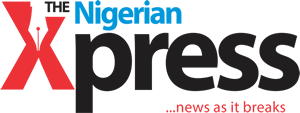Foreign investments in manufacturing hit $861.16m in first half of 2023
…Inflation now 26.72%

Emeka Okoroanyanwu
Foreign investors may have found the Nigerian investment climate favourable as they shelled $861.16 million into the country’s manufacturing sector in the first half of 2023 from $457.66 million they invested in the corresponding period of 2022. This is even as headline inflation rose to 26.72 per cent in September this year.
According to figures from the National Bureau of Statistics, NBS, Production/Manufacturing sector attracted the highest inflow of investments, with 39.82 percent of the $2.163 billion total capital importation into the country in H1’23. This was followed by the Banking sector which attracted $499.14 million investments representing 23.07 percent; and IT Services that attracted $216.08 million or 9.99 percent.
In H1’22, foreign investments into the manufacturing sector ranked second with 14.73 percent of the $3.108 billion total investment, topped by the Banking sector with $1.465 billion investment representing 47.14 percent, while the Financing sector came third attracting $396.68 million or 12.76 percent.
Also, in H2’22, the manufacturing sector, again, came second in capital importation with 22.1 percent of the total $2.22 billion recorded. The Banking sector also attracted the most investments with $624.4 million or 28.12 percent, while the Financing sector came third with investments of $394.49 million or 17.77 percent of the total investments.
MAN, in its H1’23 Economic Review, stated that local manufacturers’ investment in the sector in naira value increased to N192.89 billion in H1’23 from N178.39 billion recorded in the corresponding half of 2022; thus, indicating an increase of N14.50 billion or 8.1 percent over the period. MAN attributed the increase mostly to the depreciation of the naira in the Q2’23.
The report said the investment further increased by N47.3 billion or 32.50 percent when compared with N145.59 billion recorded in the second half of the year.
However, MAN had to explain the increase, saying: “The increase in investment in naira value was driven by the currency devaluation which saw naira depreciate to N901/$ or 65 per cent depreciation at the Investor and Export Window from N462/$ before the devaluation policy of the CBN was announced.
“Hence, the increase recorded does not indicate physical investment by manufacturers but rather nominal which resulted from the devaluation of currency that has made the manufacturers pay more for plants and machinery imports.”
Industry experts however, opined that the seeming increase in capital inflow may be misleading, noting that the rise is mostly attributable to the growing use of trade finance facilities such as loans and bonds, especially by large multinationals, to fund their operations in the country.
Further details of the NBS report revealed that capital importation in H1’23 from other investment ranked top with $1.27 billion which is 58.86 percent of the total capital importation in the period, followed by Portfolio Investment with $756.13 million (34.96 percent) and Foreign Direct Investment with $133.63 million (6.18 percent)
Meanwhile, NBS, said the headline inflation rate rose year-on-year by 26.72 per cent in September 2023.This represents a 0.92 percentage point rise when compared to 25.8 per cent recorded in August.
The Bureau disclosed this in its Consumer Price Index, CPI, Report for September noting that the food index also increased YoY to 30.64 per cent from 29.34 percent in August.
According to NBS, the rise in food inflation was caused by increases in prices of oil and fat, bread and cereals, potatoes, yam and other tubers, fish, fruit, meat, vegetables and milk, cheese, and eggs.
NBS said: “In September 2023, the headline inflation rate increased to 26.72 percent relative to the August 2023 headline inflation rate which was 25.8 percent. Looking at the movement, the September 2023 headline inflation rate showed an increase of 0.92 percentage points when compared to the August 2023 headline inflation rate.
“On a YoY basis, the headline inflation rate was 5.94 percent points higher compared to the rate recorded in September 2022, which was 20.77 percent. This shows that the headline inflation rate (YoY basis) increased in September 2023 when compared to the same month in the preceding year (i.e., September 2022).
“Furthermore, on a month-on-month basis, the headline inflation rate in September 2023 was 2.1 percent which was 1.08 percent lower than the rate recorded in August 2023 (3.18 percent). “This means that in September 2023, the rate of increase in the average price level was less than the rate of increase in the average price level in August 2023.”
On food inflation, NBS said: “The Food inflation rate in September 2023 was 30.64% on a year-on-year basis, which was 7.30 percentage points higher compared to the rate recorded in September 2022 (23.34 percent).
“The rise in Food inflation on a year-on-year basis was caused by increases in prices of Oil and fat, bread and cereals, potatoes, yam and other tubers, fish, fruit, meat, vegetables and milk, cheese, and eggs.
“In September 2023, all items inflation rate on a year-on-year basis was highest in Kogi (32.95 percent), Rivers (30.63 percent), Lagos (30.04 percent), while Borno (21.05 percent), Jigawa (22.39 percent) and Benue (23.22 percent) recorded the slowest rise in headline inflation on a year-on-year basis.
“In September 2023, Food inflation on a year-on-year basis was highest in Kogi (39.37percent) Rivers (35.95 percent), and Lagos (35.66 percent), while Jigawa (23.41 percent), Borno (25.29 percent) and Sokoto (25.38 percent) recorded the slowest rise in Food inflation on a YoY basis.”
The World Bank had earlier warned that inflation in Nigeria may hit 25 per cent by the end of 2023 as a result of the removal of petrol subsidy. The projection was contained in the Bank’s June 2023 edition of the Nigeria Development Update.
The bank noted that although there will be a significant increase in inflation in 2023, headline inflation will fall by the first quarter of 2024.
According to the bank, “The removal of the petrol subsidy is anticipated to cause a temporary increase in inflation in the upcoming months before contributing to disinflation in the medium term. The price increases resulting from the subsidy removal will have a one-time impact on prices, primarily affecting petrol purchases for transportation, power generation, and certain services.
“Headline inflation is expected to rise from 18.8 percent in 2022 to 25 percent in 2023. However, by Q1 of 2024, the subsidy removal will start to have a disinflationary effect, meaning that it will alleviate inflationary pressures despite higher petrol prices.
“This is because the subsidy removal creates additional fiscal space and reduces reliance on financing from the CBN, curbing growth of the money supply. To limit the risk of so-called second round effects, where one-off price increases trigger more generalized inflation including through wage-price spirals, it will be important to adopt macro-fiscal policy settings that are conducive to price stability.”
Inflation rose to 22.41 per cent in May, the highest in about 19 years.

